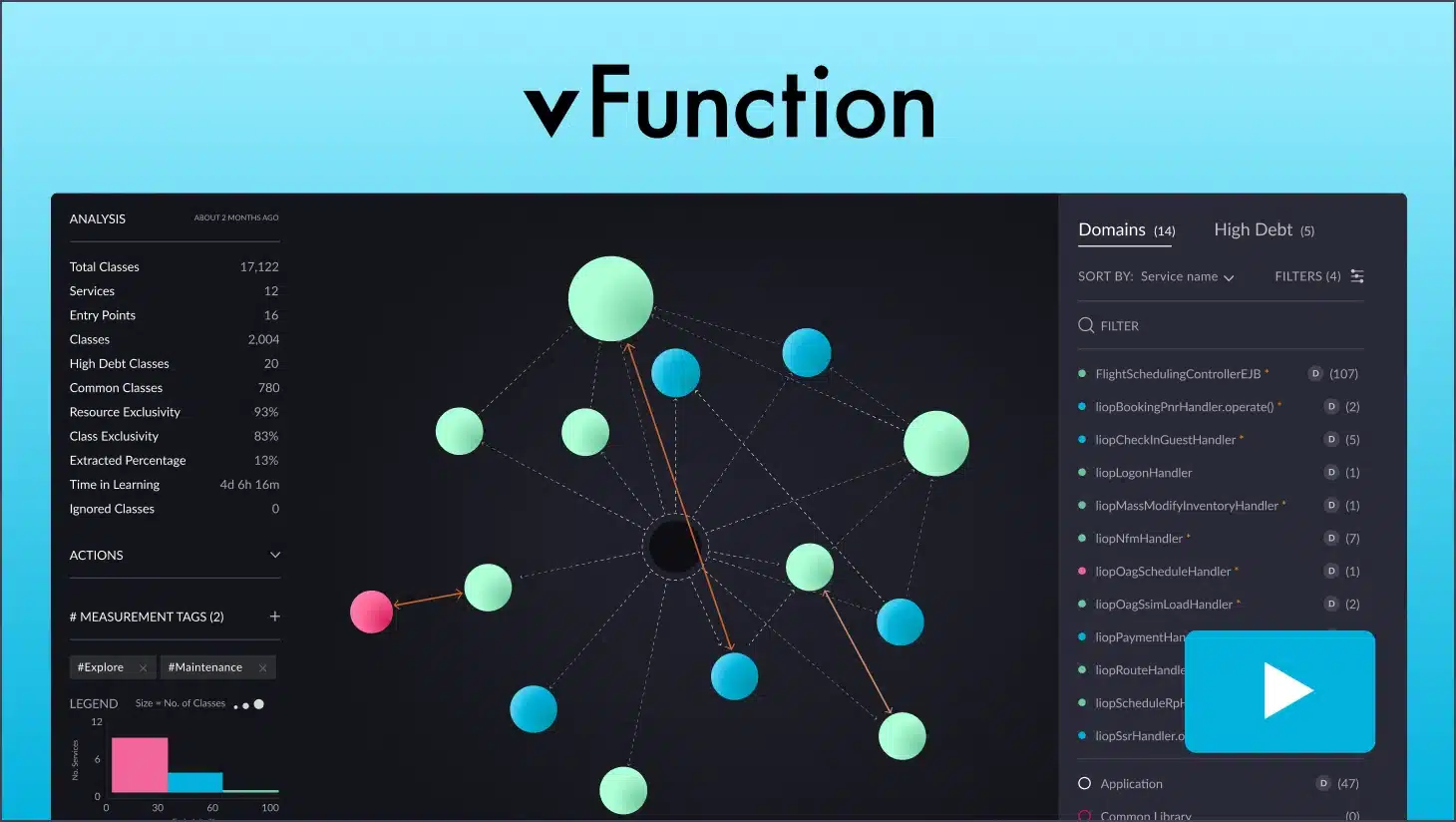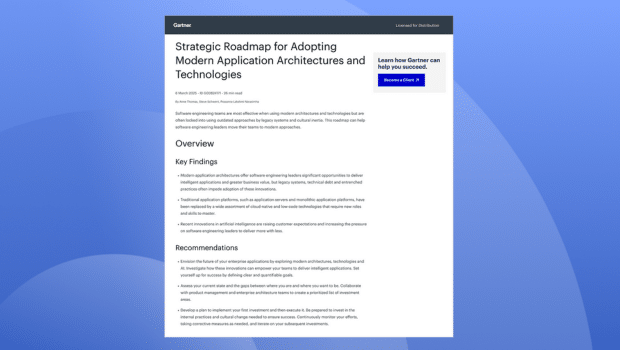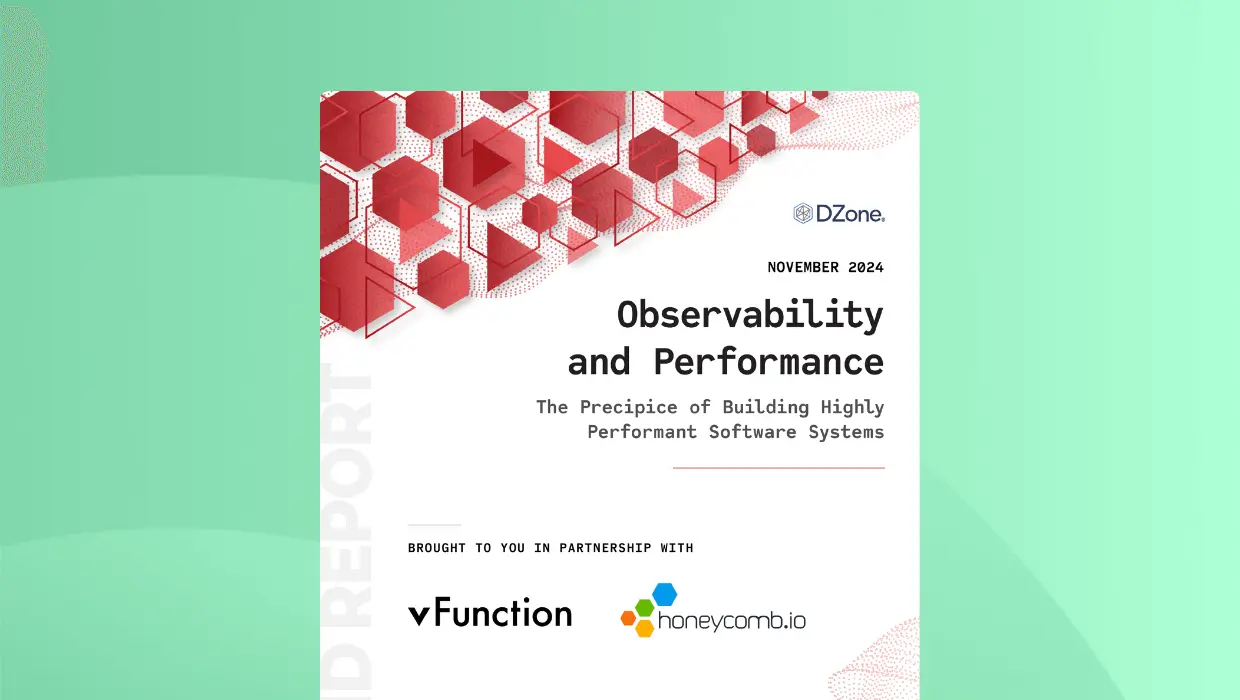Charts Course for Accelerating Innovation and Remediating Technical Debt Amidst AI-Driven Technological Advancements
MENLO PARK, CA – May 13, 2024 – vFunction today shared its vision for AI-driven architectural observability, a pioneering approach to address the $1.52 trillion technical debt problem that costs U.S. companies $2.41 trillion annually in cybersecurity and operational failures. vFunction CEO and co-founder Moti Rafalin declared the end to fragmented and manual approaches to understanding application architectures. These barriers have significantly hampered digital transformation progress at the enterprise level, resulting in mounting technical debt – particularly architectural technical debt (ATD) – leaving billions of dollars in potential revenue unrealized. vFunction, founded on the belief that software architecture is one of the most underutilized business levers in technology, envisions a future where AI-powered architectural observability transforms software development and maintenance. By capitalizing on the perfect confluence of business and technological factors to replace traditional approaches, it aims to empower software architects and development teams to achieve unparalleled engineering velocity while enabling applications to attain unprecedented scalability and resiliency.
Until recently, organizations lacked an effective means to visualize, measure, and understand applications’ architectures as they evolve through the software development lifecycle (SDLC) at company-wide scale. While most engineering teams have invested in multiple tools to reduce risk in areas such as code quality, performance, and vulnerabilities, they still rely on manual code reviews, documentation, and fragmented institutional knowledge to understand architecture-related risks and prioritize fixes. This lack of architectural observability significantly hinders organizations’ ability to increase application resiliency, scalability, and engineering velocity.
According to Rafalin, “Relying on outdated tools to identify and address architectural issues is no longer viable. The costs and risks to performance, innovation, and competitive advantage have become too high. Effectively managing technical debt, particularly architectural debt, is even more critical now as businesses increasingly leverage software and emerging technologies like AI to drive success in today’s dynamic technological landscape.”
Eliminating the Architectural Blind Spot to Increase Application Resiliency, Scalability, and Engineering Velocity
Architectural observability is the key to ensuring that engineering leaders can effectively manage and optimize their software assets to stay competitive in the digital age. However, companies lacking proper tools find understanding, quantifying, and addressing architectural issues overwhelmingly complex and challenging.
A solution to address the architectural spectrum’s two ends is crucial: monolithic applications that lack modularity and suffer from excessive interdependencies, leading to a “ball of mud,” and distributed applications, primarily microservices-based, which are overly complex and lack clarity on component dependencies, resulting in slow engineering velocity and limited resiliency. The root cause of this challenge is technical debt – specifically the combination of architectural technical debt, architectural drift, and limited architecture knowledge. Further, research commissioned and released by vFunction today shows that, when ranked, architectural technical debt is the most damaging type of technical debt for applications.
“Enterprises struggle to identify the root cause or find the biggest sources of technical debt. The lack of visibility and ability to prioritize tasks and tie them to specific business goals can lead to a lack of will to incorporate refactoring efforts in the software development lifecycle that can positively impact the health of the application.”
Moti Rafalin, vFunction CEO and co-founder
vFunction’s AI-driven architectural observability solution is designed specifically for the needs of software architects and development teams and represents a quantum leap forward in identifying the root causes of technical debt, prioritizing tasks, and aligning them with specific business objectives. In a separate announcement today, vFunction launched advancements that support a wide range of technical debt sources across the architectural spectrum, offering deeper insights and automation to remediate these issues effectively. Additionally, the new vFunction Assistant, leveraging ChatGPT-4, serves as a guide for development teams to streamline the process of re-architecting and refactoring. This empowers software architects and engineering teams to incorporate refactoring efforts into their software development lifecycle, positively impacting the health of their applications and ensuring they can keep pace with rapid digital transformation.
“According to our research, we see only 18% of organizations leveraging architectures in production applications. vFunction’s vision for AI-driven architectural observability represents a shift in the way enterprises can perceive and leverage their software architectures as a critical driver of business success,” said Paul Nashawaty, practice lead and lead principal analyst at The Futurum Group. “By recognizing the critical role of architectural observability in addressing technical debt and its impact on innovation and growth, vFunction is charting a course that will empower software architects and development teams to make informed decisions and drive unprecedented engineering velocity, scalability, and resiliency. With over 54% of organizations looking to leverage AI in production applications in the immediate future, vFunction’s forward-thinking approach allows for businesses to navigate the complexities of the digital landscape and maintain a competitive edge.”
Contact the vFunction Press Team
Reach out if you have questions about our news or media stories. We're here to help!




